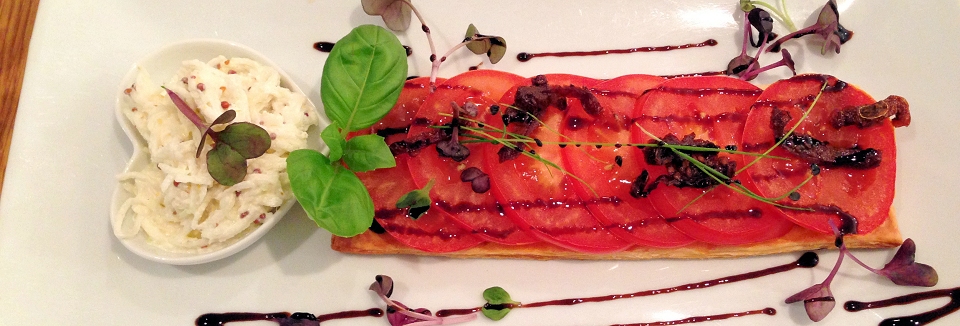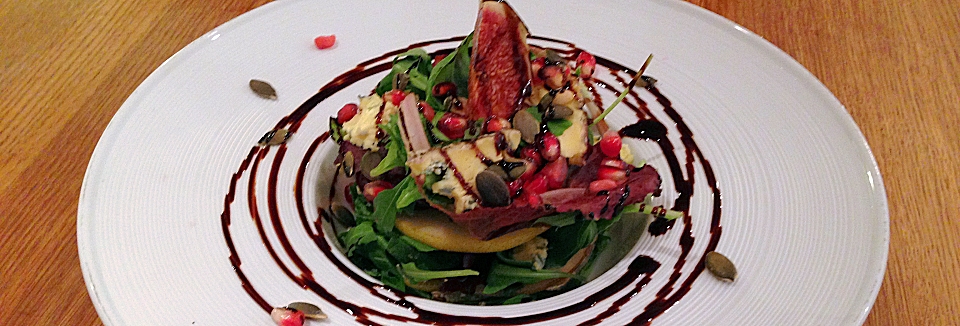He offended the mathematicians and reformers by failing to ensure that Babbage received one of the new Royal Medals (a project of his) or the vacant secretaryship of the Society in 1826. An 1830 engraving of Sir Humphry Davy, by G. R. Newton, after a painting by Sir Thomas Lawrence (17691830). Abstract and Figures. An exuberant, affectionate, and popular lad, of quick wit and lively imagination, he was fond of composing verses, sketching, making fireworks, fishing, shooting, and collecting minerals. Prefiguring the close association of dental pain with the advent of anesthesia, Davy writes: The power of the immediate operation of the gas in removing intense physical pain, I had a very good opportunity of ascertaining. Davy seriously injured himself in a laboratory accident with nitrogen trichloride. When Davy was 16 years old, his father died, and a year later he became a surgeon apprentice, with the hopes of one day having a career in medicine. In about an hour and a half, the giddiness went off, and was succeeded by an excruciating pain in the forehead and between the eyes, with transient pains in the chest and extremities. Eur Respir J 1995; 8:492506, Priestley J: Experiments and Observations on Different Kinds of Air and Other Branches of Natural Philosophy Connected with the Subject. Date Of Death: May 29, 1829 Cause Of Death: N/A Ethnicity: Unknown Nationality: British Humphry Davy was born on the 17th of December, 1778. p46072.htm#i460719. It was neither sufficiently bright nor long lasting enough to be of practical use, but demonstrated the principle. Partly paralyzed by a stroke, Davy died in Geneva, Switzerland, on May 29, 1829. In February 1801 Davy was interviewed by the committee of the Royal Institution, comprising Joseph Banks, Benjamin Thompson (who had been appointed Count Rumford) and Henry Cavendish. Beddoes, who had established at Bristol a 'Pneumatic Institution,' needed an assistant to superintend the laboratory. Its completion, according to Swedish chemist Jns Jacob Berzelius, would have advanced the science of chemistry a full century.. Although he initially started writing his poems, albeit haphazardly, as a reflection of his views on his career and on life generally, most of his final poems concentrated on immortality and death. [41] Davy's accident induced him to hire Michael Faraday as a co-worker, particularly for assistance with handwriting and record keeping. Davy's health began to fail him in the late 1820s, forcing him to resign from the Royal Society (he was replaced by Davies Gilbert). On 30 June 1808 Davy reported to the Royal Society that he had successfully isolated four new metals which he named barium, calcium, strontium and magnium (later changed to magnesium) which were subsequently published in the Philosophical Transactions. In cutting one of the unlucky teeth called dentes sapientiae, I experienced an extensive inflammation of the gum, accompanied with great pain, which equally destroyed the power of repose and of consistent action. [27] Wordsworth features in Davy's poem as the recorder of ordinary lives in the line: "By poet Wordsworths Rymes" [sic]. Davy's cousin Edmund Davy (17851857, Fellow of the Royal Society), himself a noted chemist and later discoverer of acetylene, was present for the first isolation of potassium and recounts Davy's enthusiasm for scientific experiment in indelible detail: When[Humphry Davy]saw the minute globules of potassium burst through the crust of potash, and take fire as they entered the atmosphere, he could not contain his joyhe actually bounded about the room in ecstatic delight; some little time was required for him to compose himself to continue the experiment. Humphry Davy (1778-1829), the son of an impoverished Cornish woodcarver, rose meteorically to help spearhead the reformed chemistry movement initiated by Antoine-Laurent Lavoisieralthough Davy was a critic of some of its basic premises. The Peerage. [3] Berzelius called Davy's 1806 Bakerian Lecture On Some Chemical Agencies of Electricity[4] "one of the best memoirs which has ever enriched the theory of chemistry. 1). They were aware that Davy supported some modernisation, but thought that he would not sufficiently encourage aspiring young mathematicians, astronomers and geologists, who were beginning to form specialist societies. Fellows who thought royal patronage was important proposed Prince Leopold of Saxe-Coburg (later Leopold I of Belgium), who also withdrew, as did the Whig Edward St Maur, 11th Duke of Somerset. name in native language. [13] Priestley described his discovery in the book Experiments and Observations on Different Kinds of Air (1775), in which he described how to produce the preparation of "nitrous air diminished", by heating iron filings dampened with nitric acid. Language is not only the vehicle of thought, it is a great and efficient instrument in thinking. Sir Humphry Davy, Baronet, Thomas Philips 1821. With Observations by H. Davy in which he described their experiments with the photosensitivity of silver nitrate. He also discovered benzene and other hydrocarbons. They returned to Italy via Munich and Innsbruck, and when their plans to travel to Greece and Istanbul were abandoned after Napoleon's escape from Elba, they returned to England. Looking back on Davy's time at the Pneumatic Institute and the startling breadth and depth of his research during less than 2 yr there, one cannot help wondering what he might have accomplished had he been able to continue his work. This led to his Elements of Agricultural Chemistry (1813), the only systematic work available for many years. [68], In 1826 he suffered a stroke from which he never fully recovered. The gas was popular among Davy's friends and acquaintances, and he noted that it might be useful for performing surgical operations. Bristol Gazette and Public Advertiser, March 21, 1799, Davy H: Researches Chemical and Philosophical Chiefly Concerning Nitrous Oxide. [38] In the gas experiments Davy ran considerable risks. One winter day he took Davy to the Larigan River,[12] To show him that rubbing two plates of ice together developed sufficient energy by motion, to melt them, and that after the motion was suspended, the pieces were united by regelation. Cambridge: Cambridge University Press, pp. [69], See Fullmer's work for a full list of Davy's articles.[95]. Davy features in the diary of William Godwin, with their first meeting recorded for 4 December 1799.[19]. While every effort has been made to follow citation style rules, there may be some discrepancies. They write new content and verify and edit content received from contributors. These candidates embodied the factional difficulties that beset Davy's presidency and which eventually defeated him. He permitted Davy to use his laboratory and possibly directed his attention to the floodgates of the port of Hayle, which were rapidly decaying as a result of the contact between copper and iron under the influence of seawater. During his tenure in Bristol, Davy became acquainted with many of the eminent poets of his time, or indeed any time, including Robert Southey (17741843, Poet Laureate of the United Kingdom), Samuel Taylor Coleridge (17721834), and William Wordsworth (17701850, Poet Laureate of the United Kingdom). He went on to electrolyse molten salts and discovered several new metals, including sodium and potassium, highly reactive elements known as the alkali metals. The first public demonstrations of anesthesia, by Horace Wells (18151848) in 1845 and William T. G. Morton (18191868) in 1846, initially capture the imagination with their daring audacity. In the so-called Hamel Catastrophe of 1820, a scientific expedition lost three local guides after the entireparty fell 1,200 feet in an avalanche. [42] Davy's party sailed from Plymouth to Morlaix by cartel, where they were searched. The information contained in this biography was last updated on December 4, 2017. [41], In 1812, Davy was knighted and gave up his lecturing position at the Royal Institution. Beddoes, 1799) was a refutation of Lavoisiers caloric, arguing, among other points, that heat is motion but light is matter. During the ensuing years Davy would use electrolytic experiments to isolate a startling array of elements, not only sodium and potassium but also calcium, strontium, barium, magnesium, boron, and chlorine. Bristol: Biggs and Cottle, 1799An essay on heat, light, and the combinations of light,Beddoes T. Beddoes T: A letter to Dr. Darwin on a new mode of treating pulmonary consumption, in letters from Dr. Withering, Dr. Ewart, Dr. Thornton and Dr. Biggs together with some other papers by Thomas Beddoes. Although Davy's work on respiratory physiology and nitrous oxide anesthesia had little practical impact in his own time, he bequeathed to us a foundational legacy of scientific inquiry that endures to this day. I am sure there is no desire in [the Royal Society] to exert anything like patriarchal authority in relation to these institutions". That Davy should have participated in both of these equally revolutionary movements is an emblem of his genius and may help us understand how Davy's remarks on nitrous oxide and anesthesia should have been misplaced among his other works. Sir Humphry Davy, 1st Baronet, FRS (December 17, 1778 - May 29, 1829) was an esteemed British chemist and physicist, who vastly expanded chemical knowledge by isolating and identifying a host of new chemical elements, and by linking the action of acids to hydrogen instead of oxygen. In Bristol, Davy again took up dephlostigated nitrous air, happily bequeathing it a new and less cumbersome title: nitrous oxide. London, Murray and J. Johnson, 1793A letter to Dr. Darwin on a new mode of treating pulmonary consumption, Beddoes T: The Pneumatic Institution for Gas Therapy. He also showed that chlorine is a chemical element, and experiments designed to reveal oxygen in chlorine failed. At 17, he discussed the question of the materiality of heat with his Quaker friend and mentor Robert Dunkin. Davy's party did not meet Napoleon in person, but they did visit the Empress Josphine de Beauharnais at the Chteau de Malmaison. Although this might appear a doubtful and even dangerously eccentric task, consider that Davy accomplished much by applying the well-known methods of Priestly, Volta, and others in areas in areas where they had never been thought applicable before. He nearly lost his own life inhaling water gas, a mixture of hydrogen and carbon monoxide sometimes used as fuel. He explained the bleaching action of chlorine (through its liberation of oxygen from water) and discovered two of its oxides (1811 and 1815), but his views on the nature of chlorine were disputed. Gregory Watt, son of James Watt, visited Penzance for his health's sake, and while lodging at the Davys' house became a friend and gave him instructions in chemistry. In 1815, Davy suggested a theory explaining composition and properties of acids and bases. In this year the first volume of the West-Country Collections was issued. Humphry Davy's Early Chemical Knowledge, Theory and Experiments: An Edition of His 1798 Manuscript, "An Essay on Heat and the Combinations of Light" from The Royal Institution of Cornwall, Courtney Library, MS DVY/2. In 1812 Davy was knighted, becoming the first physical scientist since Isaac Newton (16431727, President of the Royal Society) to receive this honor. Berzelius is best remembered for his experiments that established the law of constant proportions. [29], During the first half of 1808, Davy conducted a series of further electrolysis experiments on alkaline earths including lime, magnesia, strontites and barytes. "[6], At the age of six, Davy was sent to the grammar school at Penzance. These experiments were detailed in On Some Chemical Agencies of Electricity, a lecture Davy delivered in 1806. These views were explained in 1806 in his lecture On Some Chemical Agencies of Electricity, for which, despite the fact that England and France were at war, he received the Napoleon Prize from the Institut de France (1807). Davy wrote to Davies Gilbert on 8 March 1801 about the offers made by Banks and Thompson, a possible move to London and the promise of funding for his work in galvanism. 9. [55], Initial experiments were again promising and his work resulted in 'partially unrolling 23 MSS., from which fragments of writing were obtained' [56] but after returning to Naples on 1 December 1819 from a summer in the Alps, Davy complained that 'the Italians at the museum [were] no longer helpful but obstructive'. 10506. Sir Humphry Davy, widely considered to be one of the greatest chemists and inventors that Great Britain has ever produced, is highly regarded for his work on various alkali and alkaline earth metals, and for his valuable contributions regarding the findings of the elemental nature of chlorine and iodine. At the beginning of June, Davy received a letter from the Swedish chemist Berzelius claiming that he, in conjunction with Dr. Pontin, had successfully obtained amalgams of calcium and barium by electrolysing lime and barytes using a mercury cathode. A commemorative slate plaque on 4 Market Jew Street, Penzance, claims the location as his birthplace. Robert Davy died in 1794, saddling his widow with a large debt as a result of his mining adventures. Thinking, Statistics, Language. . [69][1] He had wished to be buried where he died, but had also wanted the burial delayed in case he was only comatose. Not all of Davy's experiments were so morbid and nearly mortal as those involving carbon monoxide. ( b. Penzance, England, 17 December 1778; d. Geneva, Switzerland, 29 May 1829) chemistry. In an uncanny example of history repeating itself, Faraday in 1818 would comment on the anesthetic properties of ether, while duplicating his mentor's failure to seize upon the practical significance of this insight.15. .css-m6thd4{-webkit-text-decoration:none;text-decoration:none;display:block;margin-top:0;margin-bottom:0;font-family:Gilroy,Helvetica,Arial,Sans-serif;font-size:1.125rem;line-height:1.2;font-weight:bold;color:#323232;text-transform:capitalize;}@media (any-hover: hover){.css-m6thd4:hover{color:link-hover;}}Albert Einstein, This Is the Crew of the Artemis II Mission, Biography: You Need to Know: Fazlur Rahman Khan, Biography: You Need to Know: Tony Hansberry, Biography: You Need to Know: Bessie Blount Griffin, Biography: You Need to Know: Frances Glessner Lee. We are similarly indebted to Davy for the first account of carbon monoxide poisoning, described as follows: After the second inspiration, I lost all power of perceiving external things, and had no distinct sensation except a terrible oppression of the chest. With that work came recognition in the field, and Davy became a professor of chemistry at the Royal Institution of Great Britain two years later. Davy for his part was not prepared to accept this state of affairs. I have been severely wounded by a piece scarcely bigger. Davy, Beddoes decided, would be that person. Nicholas Riegels, Michael J. Richards; Humphry Davy: His Life, Works, and Contribution to Anesthesiology. He made notes for a second edition, but it was never required. Three of Davy's paintings from around 1796 have been donated to the Penlee House museum at Penzance. Davy was acquainted with the Wedgwood family, who spent a winter at Penzance.[8]. From 1761 onwards, copper plating had been fitted to the undersides of Royal Navy ships to protect the wood from attack by shipworms.
07770 673450 / 07885 042731
Supper Club, Wokingham








